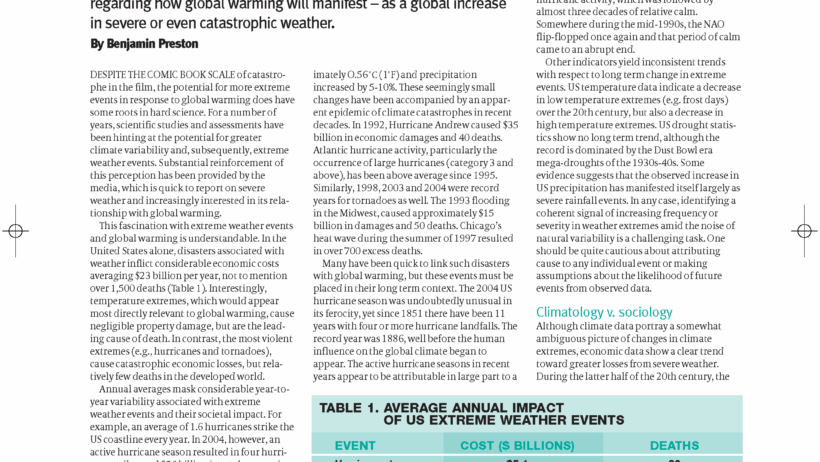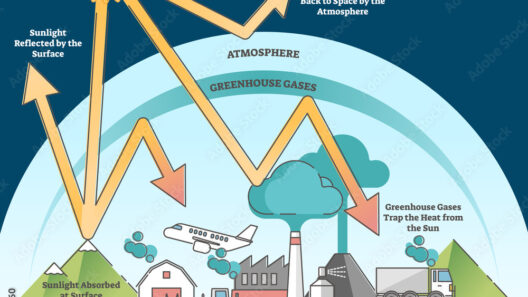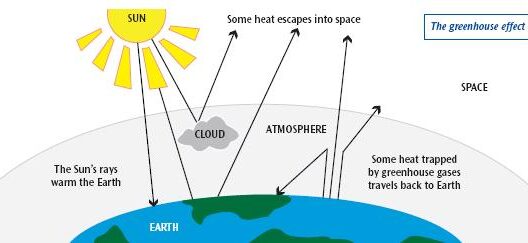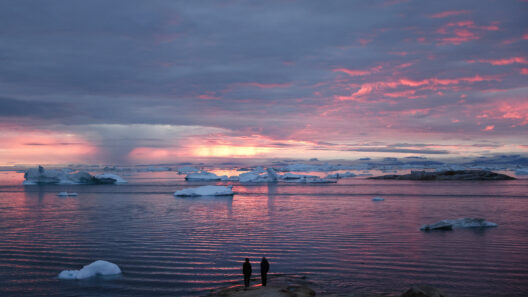In recent years, the phrase “weather gone wild” has echoed across headlines, capturing the attention of scientists, policymakers, and the general public alike. This frenetic terminology embodies an unsettling reality: the frequency and intensity of extreme weather events has surged unnervingly. Tornadoes that wreak havoc, hurricanes that deliver apocalyptic winds, and unprecedented heatwaves are not mere anomalies; they are symptomatic of a broader phenomenon fueled by anthropogenic climate change.
The correlation between human activities and shifts in atmospheric conditions is well-established. As greenhouse gas concentrations rise, largely due to fossil fuel combustion and deforestation, the Earth’s delicate climatic balance is perturbed. This sets off a cascade of reactions within the atmosphere, oceans, and land, manifesting as extreme weather. These events are not just solitary incidents—they are interwoven threads that contribute to a more profound narrative of environmental upheaval.
Addressing this urgent issue necessitates an understanding of what constitutes “extreme weather.” The term encompasses a wide array of phenomena, including severe storms, droughts, floods, and temperature extremes. While natural variability plays a role in these occurrences, the influence of global warming cannot be overstated. The warming Earth acts as a catalyst that enhances the natural processes leading to these extreme events. It is crucial to recognize that global warming does not create these occurrences but rather amplifies their frequency and severity.
Take hurricanes, for instance. Studies indicate that warmer ocean waters serve as a breeding ground for more potent storms. The energy harvested from elevated sea temperatures can lead to more intense and destructive hurricanes, causing catastrophic loss of life and widespread economic destruction. Furthermore, a warmer atmosphere holds more moisture, exacerbating rainfall during such storms. This is particularly evident in events like Hurricane Harvey in 2017, where record-breaking precipitation caused devastating flooding in Texas.
Tornadoes also illustrate the complexities of weather exacerbated by climate change. While the formation of tornadoes involves intricate meteorological phenomena, conditions influenced by climate change can create an environment more conducive to their development. Increased moisture levels and warmer temperatures can lead to more vigorous storm systems, thereby heightening the likelihood of tornado formation. The increasing frequency of severe tornado events raises the question: can we adapt our infrastructure and emergency response to withstand this new reality?
Extreme heat events, another manifestation of global warming, pose severe health risks and challenge the limits of human endurance. Prolonged heatwaves can result in direct fatalities, particularly among vulnerable populations such as the elderly or individuals with pre-existing health conditions. Moreover, the escalating demand for energy to cool homes creates additional stress on power grids, which can lead to outages in peak demand. The synergistic effects of extreme heat on public health and energy systems warrant a comprehensive response from both local and national governments.
Flooding, too, has been exacerbated by climate change. The rising sea levels resultant from melting ice caps and glacial retreats combine with intensified rainfall to create dangerous flooding scenarios in coastal regions. Urban areas with significant impervious surfaces are particularly prone, as heavy rainfall overwhelms drainage systems. Recent floods across the globe underscore a grim reality: flood mitigation efforts are often one step behind the escalating frequency of such events. This gap calls for innovative resilience planning to protect communities from the floodwaters of a warming planet.
While these meteorological shifts are alarming, they should also catalyze action. A public that is aware of the ties between extreme weather and climate change is better positioned to demand systemic changes. Public discourse must evolve, emphasizing the need for sustainable practices, renewable energy sources, and comprehensive climate policies. With policymakers at various levels of government increasingly recognizing climate change as a pressing issue, it is imperative that citizens remain informed and engaged. Collective advocacy can undoubtedly drive action toward addressing the root causes of global warming.
In addition to individual actions, communities must bolster their adaptive capacities. This encompasses preparing for future climatic scenarios through infrastructure improvements, emergency planning, and community education programs. Municipalities that invest in climate-resilient designs, restore natural buffers like wetlands, and build green spaces can mitigate some impacts of extreme weather. Such measures not only protect against disasters but also enhance the overall quality of life for residents.
In conclusion, the phenomena labelled “weather gone wild” are not isolated incidents but threads of a larger fabric woven by climate change. As global warming intensifies, its influence on extreme weather will only become more pronounced. Acknowledging this reality empowers nations, communities, and individuals to adapt, mitigate, and strive for a sustainable future. The time for action is now, for the stakes have never been higher in the fight against climate change and its tumultuous manifestations. Recognizing the intertwined nature of these threats will help guide a collective response to beckon a more stable and secure climatic future.








